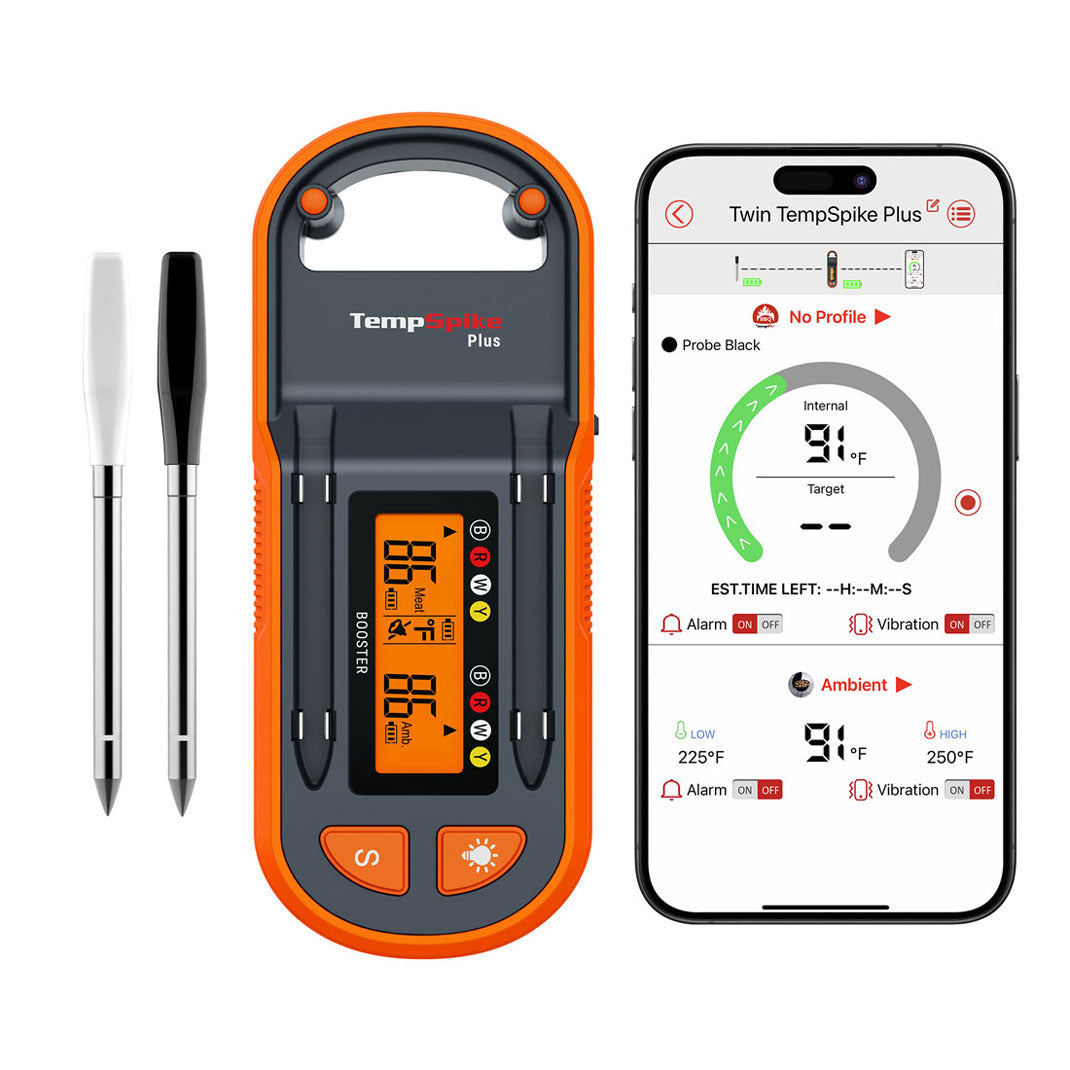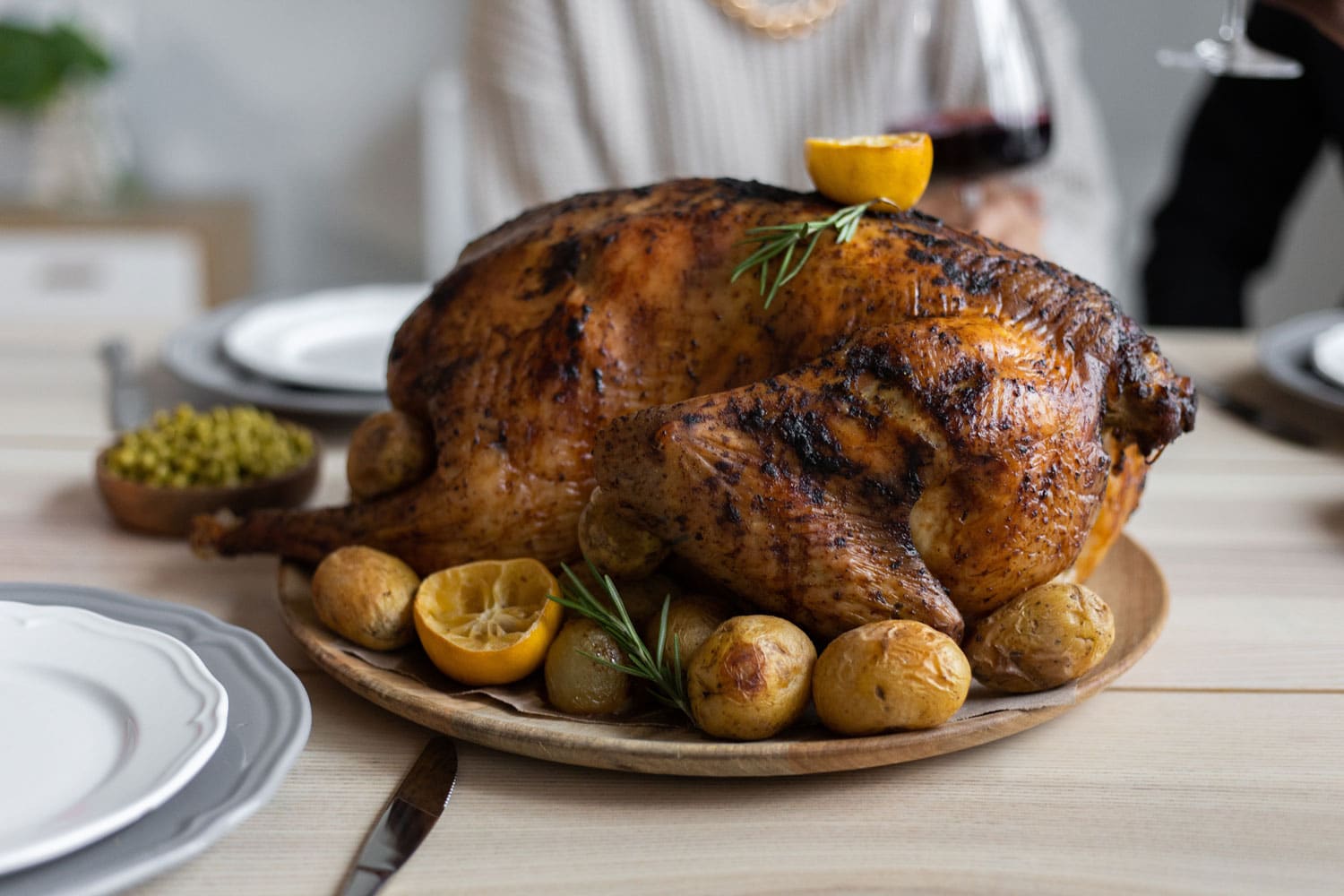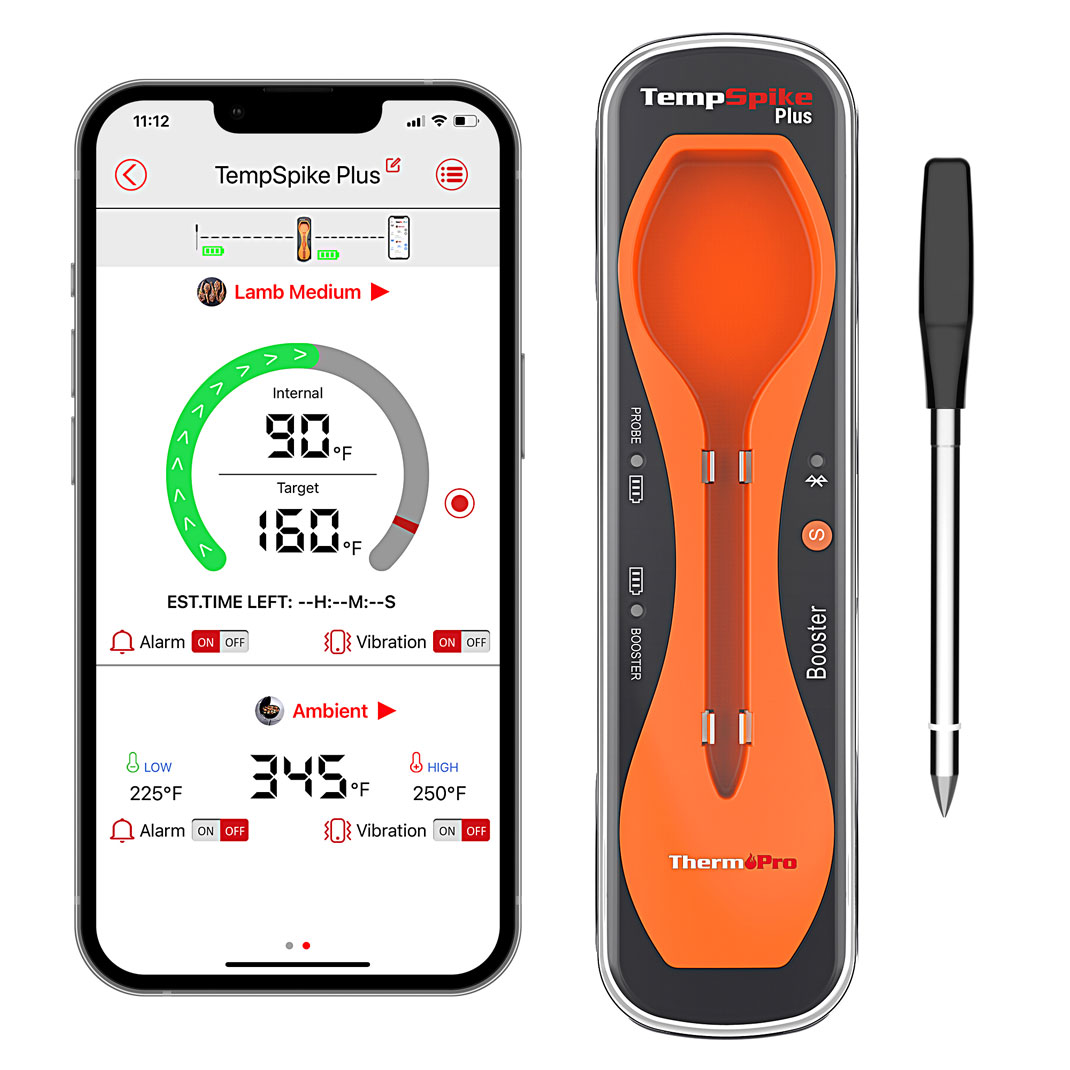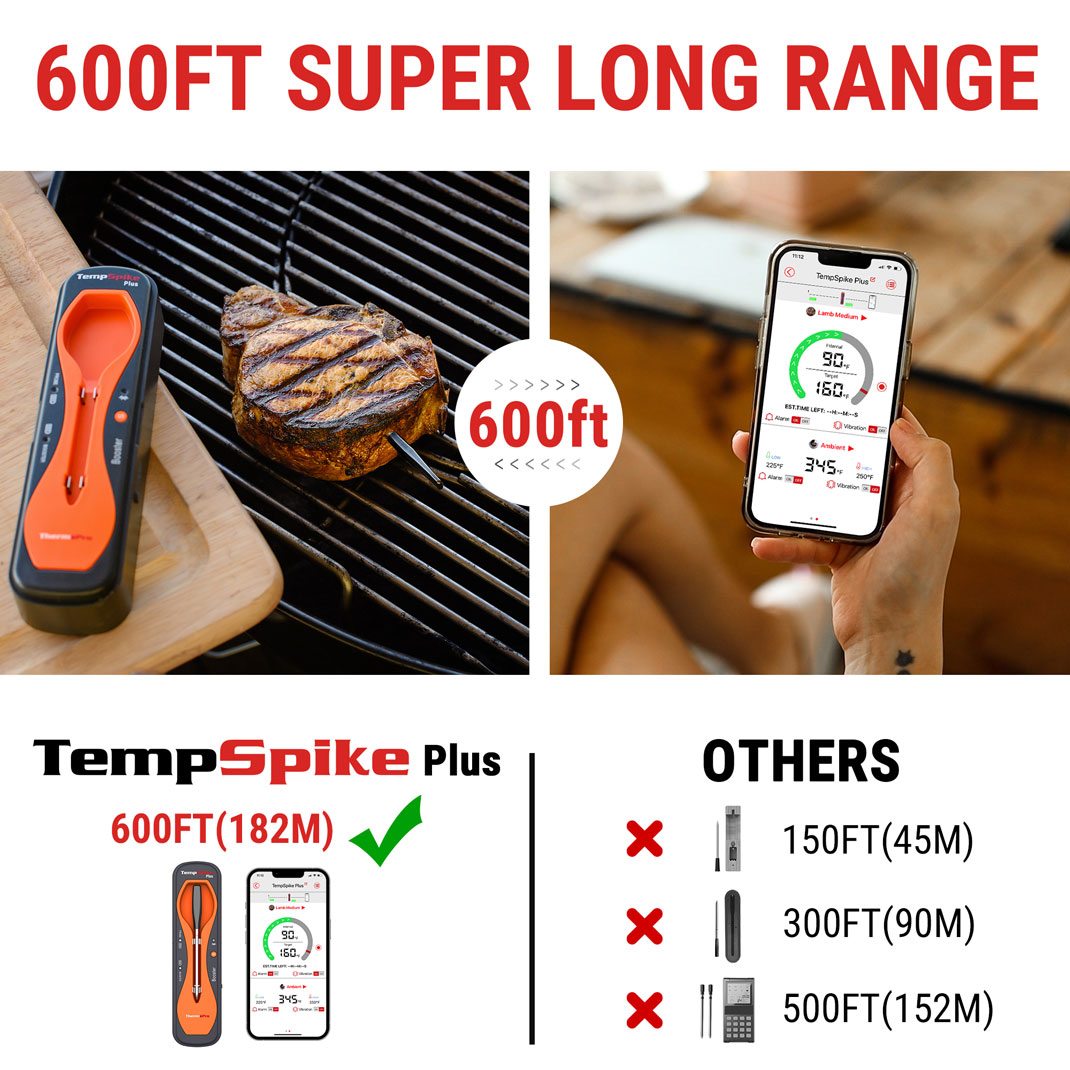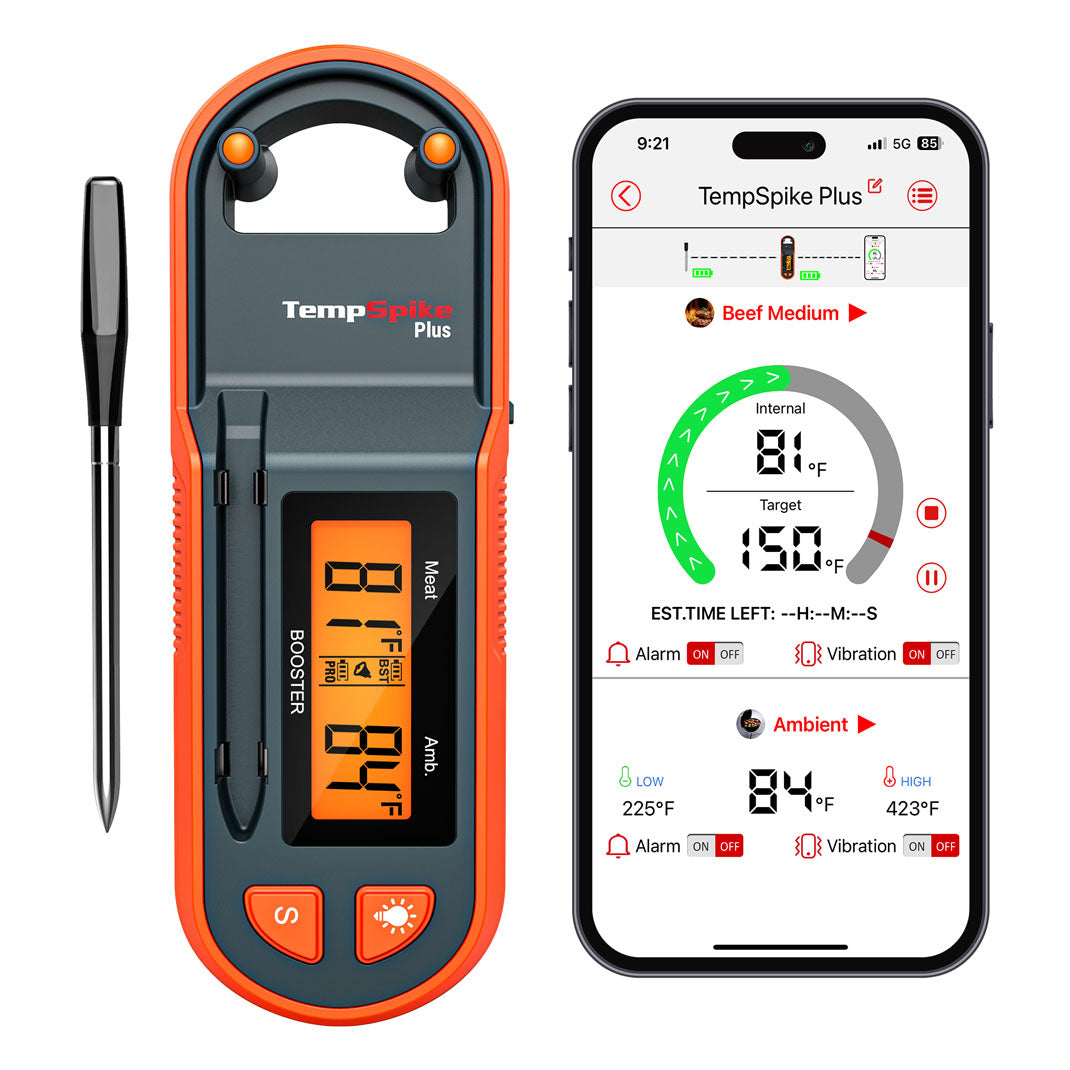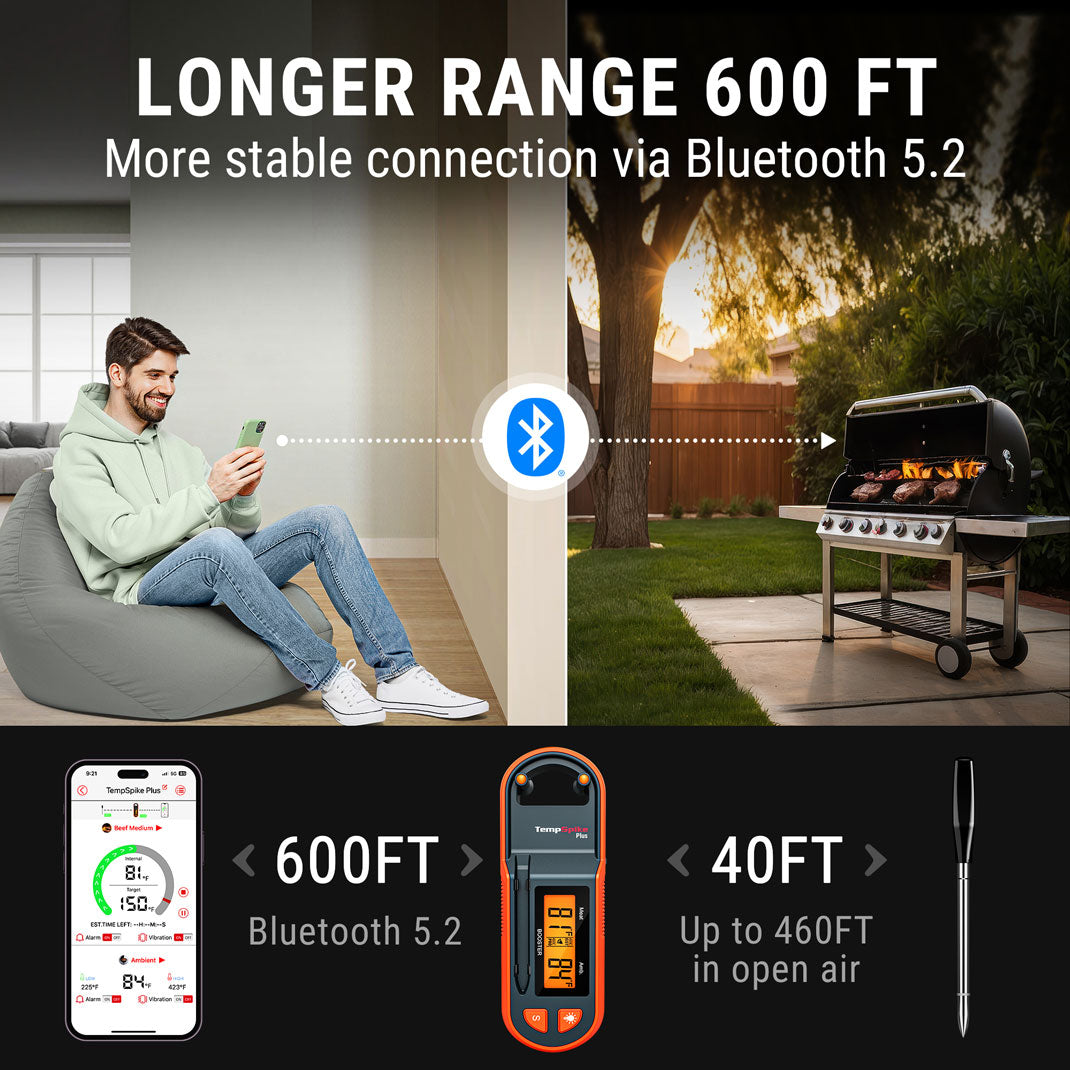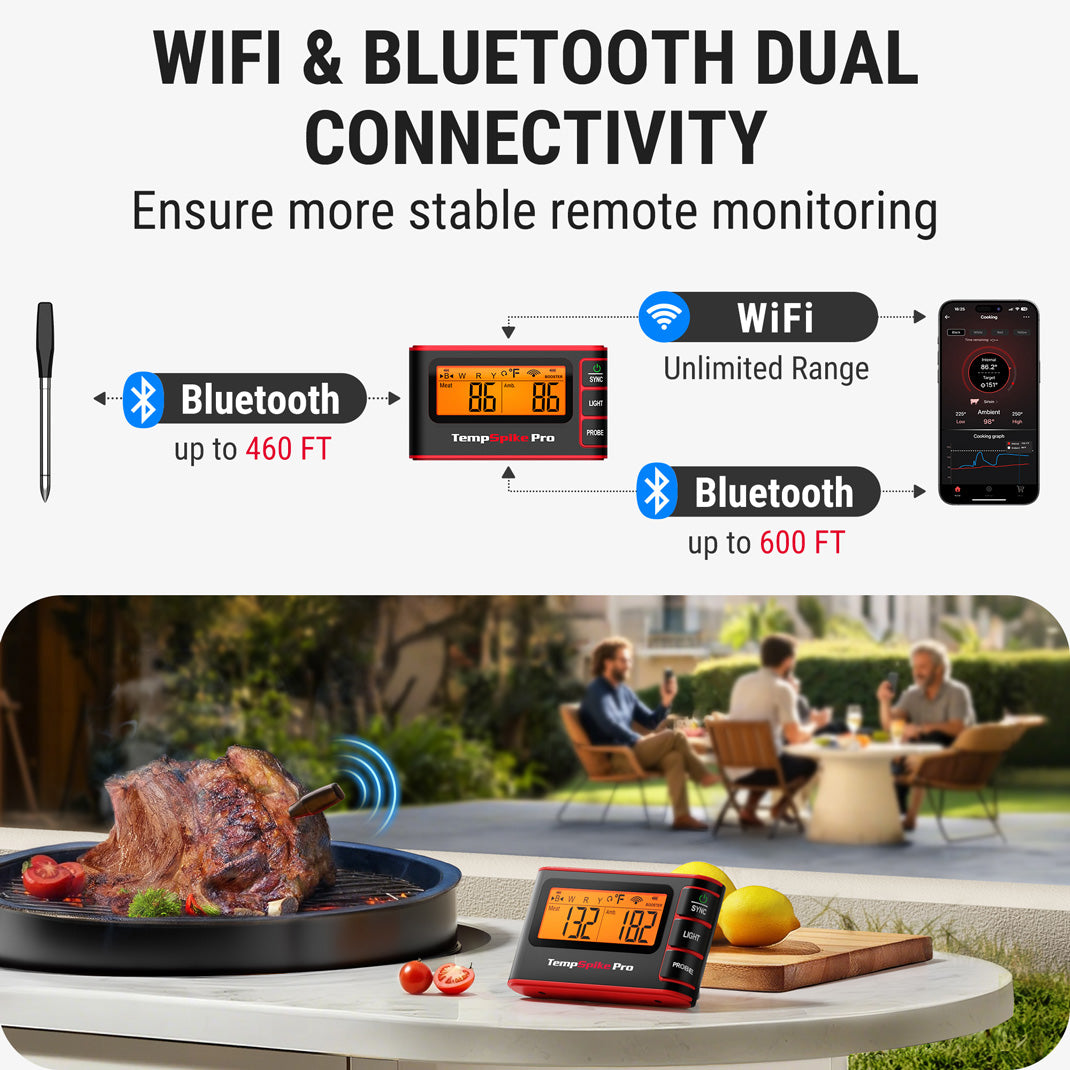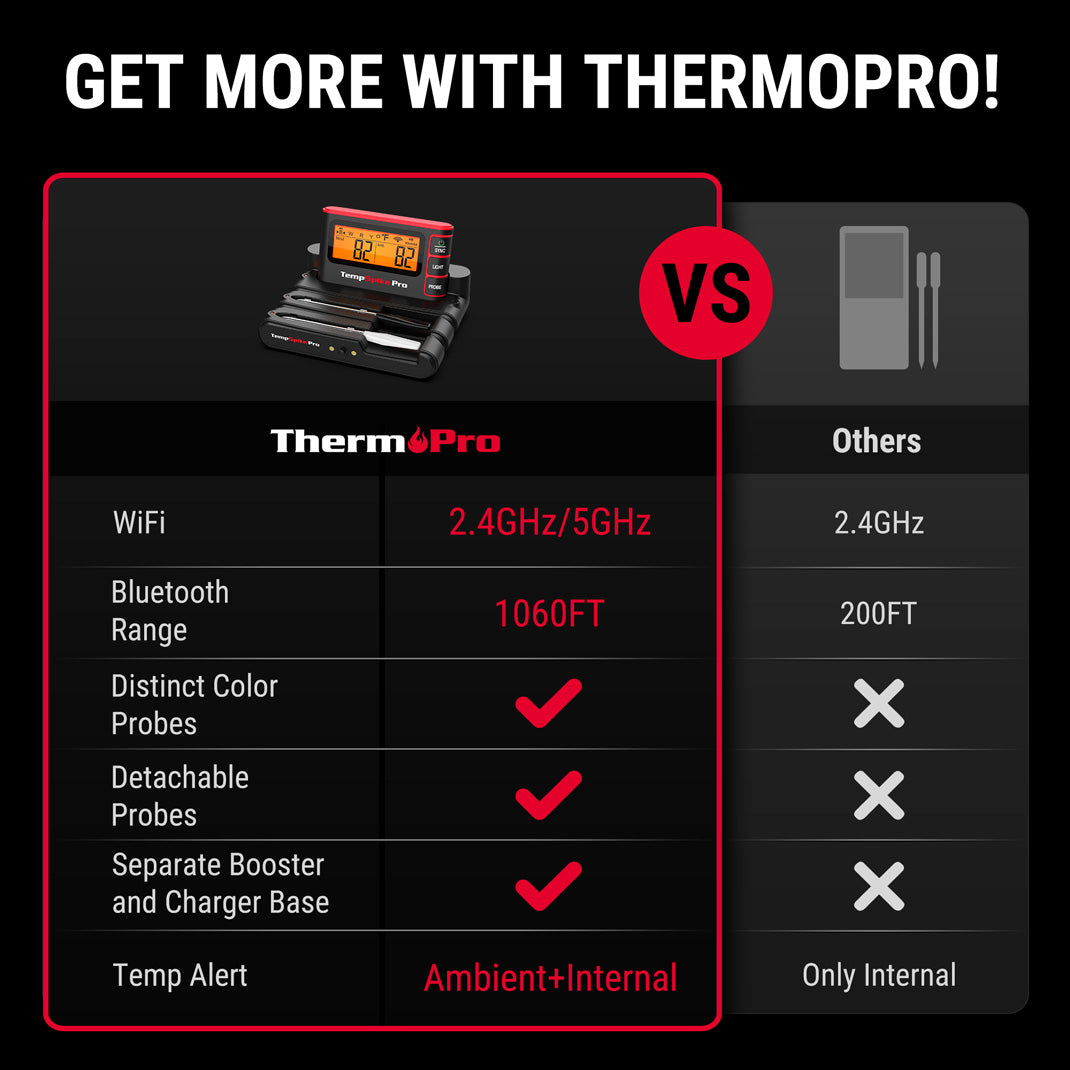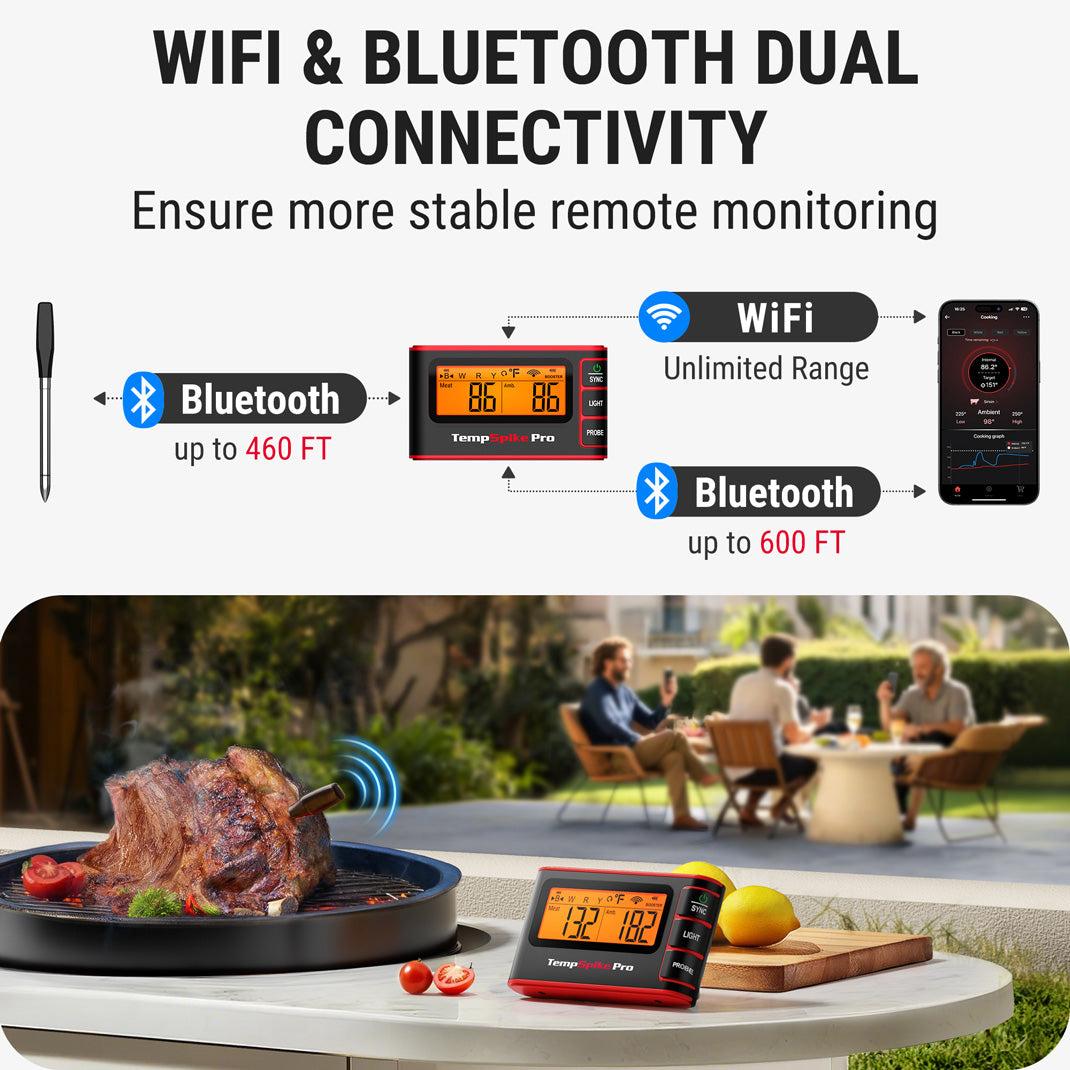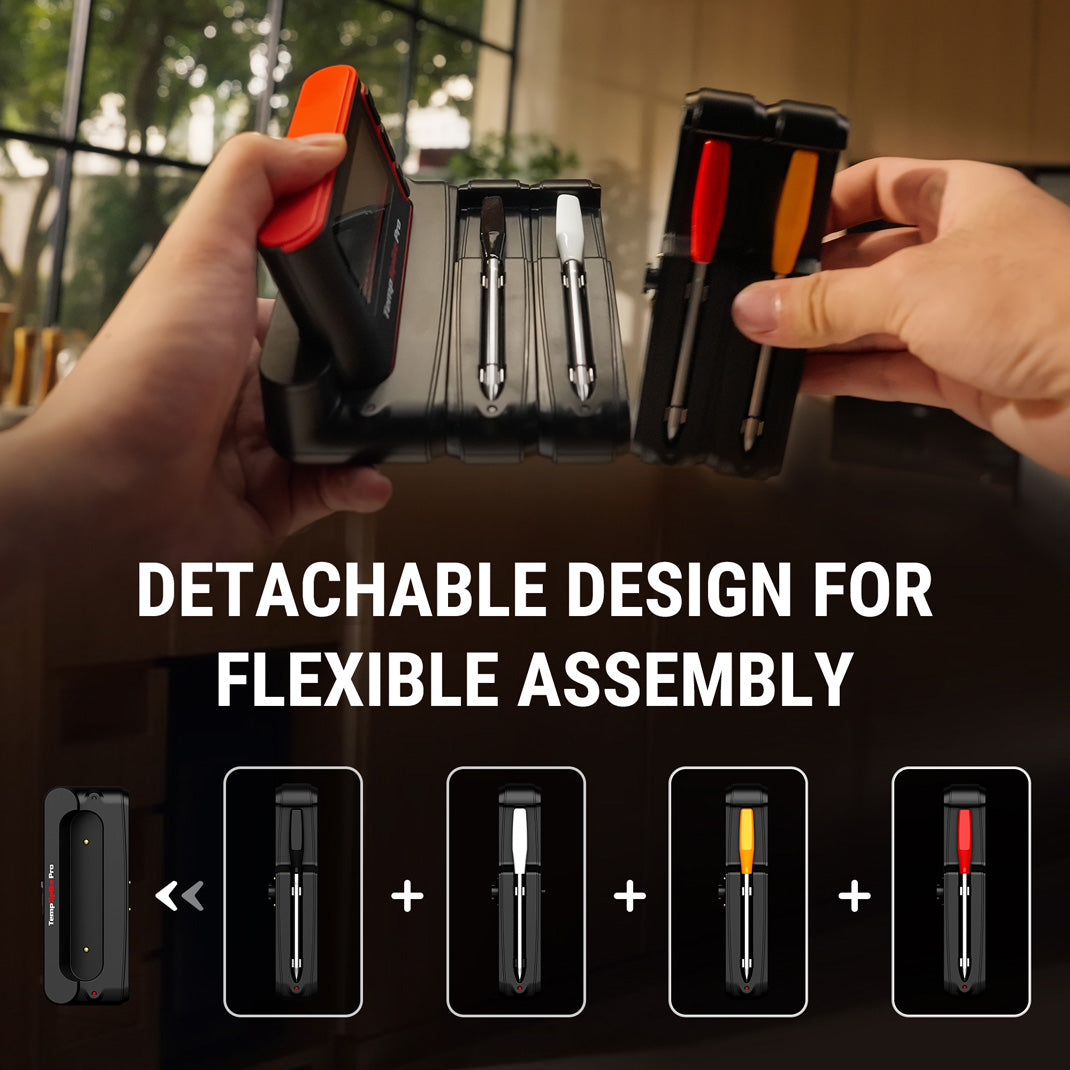How to Tell If Turkey Is Cooked With and Without a Thermometer






 288 Comments
288 Comments
Cooking the perfect turkey isn't just about golden skin and mouthwatering aroma—it's about making sure your bird is thoroughly cooked, juicy, and safe to eat. Undercooked turkey is not only unappetizing but can also be a serious health risk due to harmful bacteria like salmonella.
So, how do you know when turkey is cooked? Whether you're roasting your first Thanksgiving bird or grilling turkey legs for a weekend BBQ, knowing how to tell if turkey is cooked is a must-have kitchen skill. In this guide, we'll cover how to check turkey doneness with and without a smart meat thermometer.
Why Proper Turkey Doneness Matters
Turkey is a lean protein, which means it can quickly go from undercooked to dry if you're not paying attention. The USDA recommends cooking turkey to an internal temperature of 165°F (74°C) in the thickest part of the breast and 170–175°F (77–80°C) in the thigh. This ensures the meat is both safe and flavorful.
Whether you're cooking a whole bird, a boneless breast, or thighs, the key is hitting the right temperature without guesswork.

How to Know If Turkey Is CookedWith a Meat Thermometer
The easiest, most accurate way to know if turkey is cooked is by using a meat thermometer. And not just any thermometer—one that gives fast, precise readings and takes the guesswork out of your holiday feast.
Recommend: ThermoPro TP972 TempSpike Plus Bluetooth Meat Thermometer
When it comes to cooking a turkey—especially for a big holiday meal—you don't want to guess. You want precision, convenience, and total peace of mind. That's exactly what you get with the ThermoPro TP972 Twin TempSpike Plus Bluetooth Meat Thermometer, one of the most advanced tools for perfectly cooked poultry.

So what makes the TP972 such a great fit for turkey lovers?
Dual Probes
The TP972 features two wireless probes, each equipped with dual sensors—one for the internal meat temperature and one for the ambient oven or grill temp. This means you can monitor both the turkey breast and thigh at the same time, ensuring every part of your bird hits the ideal doneness.
Smart App with Long-Range Bluetooth
With a 600-foot Bluetooth range, you can monitor your turkey from the couch, the patio, or even while mingling with guests. The easy-to-use ThermoPro app allows you to set target temperatures, track live progress, and receive alerts when your turkey is ready—no need to open the oven 20 times.
Precision and Speed
The ThermoPro TP972 delivers fast, accurate temperature readings so you'll know exactly when to pull your turkey for maximum juiciness and safety. No more overcooking the breast while waiting for the thigh to catch up—this wireless meat thermometer helps you balance both perfectly.
Long Battery Life
Each probe charges in a sleek, compact booster with a built-in display screen. With 36 hours of continuous battery life, it's ready for low-and-slow roasts, marathon holiday dinners, or weekend smoking sessions.
Durable, Waterproof Design
Made with premium stainless steel and built to be IP67 waterproof, the TP972 can handle drips, flare-ups, or splashes during clean-up. It's made for real kitchens—not just Instagram ones.

Why It's Perfect for Turkey
Turkey is a large, dense bird that requires precise temperature control in multiple areas to avoid common pitfalls like dry breast meat or undercooked thighs. The ThermoPro TP972's dual-probe system solves this by letting you monitor both key zones at once. You'll know exactly when to rest and carve—no second-guessing, no pink surprises.
Whether you're roasting a holiday bird or smoking a turkey outdoors, the ThermoPro TP972 helps you achieve perfectly cooked, flavorful results with confidence and ease.
How to Tell If Turkey Is Cooked Without a Thermometer
No meat thermometer on hand? Don't worry—you can still tell if turkey is cooked by using a few tried-and-true methods. While they're not as precise, they'll do the trick in a pinch.
Check the Juices
Poke the thickest part of the turkey thigh with a fork or knife. If the juices run clear, that's a good sign your turkey is done. If the juices are pink or reddish, it needs more time in the oven.
Pro tip: Let the turkey rest for at least 15–20 minutes after cooking. This helps the juices settle and gives you a clearer look at doneness.
Wiggle the Leg
Grab the drumstick and give it a gentle wiggle. If it moves loosely in the joint and feels like it could fall off easily, your turkey is likely done. A stiff or resistant leg means more cooking is needed.
Visual Inspection
Cut a small slit in the thickest part of the breast or thigh. The meat should appear white or opaque, not translucent or pink. Keep in mind that some pinkness near the bone can be normal if the turkey was smoked or brined, but the meat texture should be fully set—not rubbery.
Common Mistakes When Judging Doneness
Even experienced cooks sometimes get tripped up by visual cues alone. Here are a few pitfalls to avoid:
- Going by color only: Some turkeys may still appear slightly pink even when fully cooked, especially near the bones. This can happen with younger birds or brined ones.
- Assuming the timer popper is accurate: Those built-in pop-up thermometers can be unreliable and often go off late.
- Skipping rest time: Pulling the turkey out at 165°F and resting it allows carryover cooking to finish the job without drying it out.
Best Practices for Perfectly Cooked Turkey
Here's how to tell if a turkey is done with confidence—every time:
1. Use a reliable meat thermometer (like the ThermoPro TP972).
2. Insert the probe into the thickest part of the breast and thigh, avoiding bones.
3. Aim for:
- 165°F in the breast
- 170–175°F in the thigh
4. Let it rest for at least 15 minutes before carving.
5. Avoid opening the oven frequently—this lowers the temperature and adds cooking time.
Try These Delicious Turkey Recipes
Ready to put your perfectly cooked turkey skills to the test? Here are four flavorful turkey recipes to inspire your next meal—from classic holiday favorites to bold new twists:
Creole Smoked Turkey Legs
Juicy, smoky, and packed with Cajun flavor—these turkey legs bring Southern heat to your table.
Spatchcock Turkey
Cut down cooking time and boost flavor with this butterflied whole turkey—perfect for even roasting and juicy results.
Holiday Turkey with Mashed Sweet Potatoes
A classic roast paired with creamy sweet potatoes—your go-to combo for a comforting, festive meal.
Deep-Fried Turkey Wings
Crispy on the outside, tender inside—this bold, crowd-pleasing recipe is perfect for game day or a weekend feast.

Explore these recipes and discover just how versatile and delicious turkey can be—beyond just Thanksgiving!
Final Thoughts
Learning how to tell if turkey is cooked isn't just about food safety—it's about delivering a bird that's juicy, flavorful, and truly crowd-pleasing. While you can rely on visual cues and texture if you have no tools, the most reliable method is always a thermometer.
And if you're looking for one that's accurate, convenient, and smart, the ThermoPro TP972 Twin TempSpike Plus Bluetooth Meat Thermometer is a game-changer. With it, you'll never again have to wonder how to know if turkey is cooked without thermometer—because you'll always have the right tool in hand.
So whether it's Thanksgiving or just a Sunday roast, you now know how to tell if a turkey is done without a thermometer—but also why having a great one makes cooking a lot easier.











